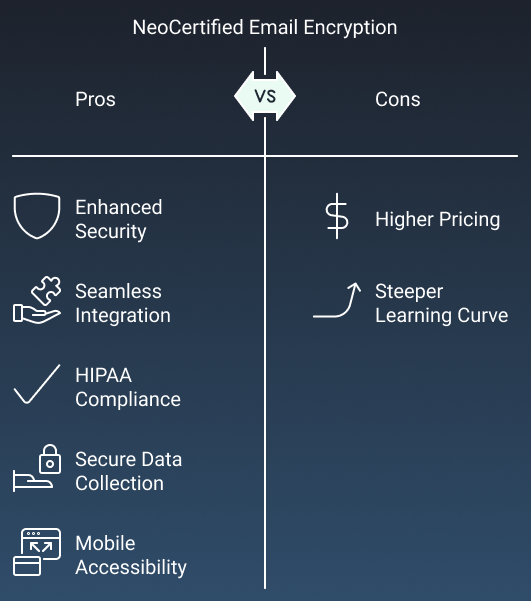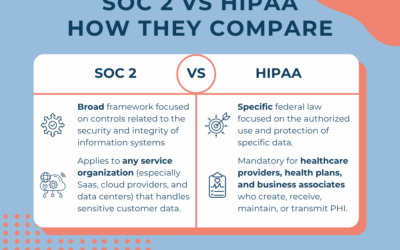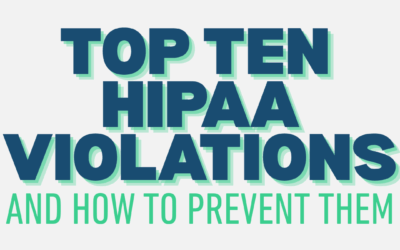Introduction
In today’s digital age, protecting sensitive patient information (PHI) is paramount for healthcare organizations. HIPAA compliance mandates stringent security measures, including the use of robust email encryption services. NeoCertified offers a comprehensive solution tailored to the needs of healthcare businesses. This in-depth review will explore NeoCertified’s key features, benefits, drawbacks, pricing, and user experience, providing valuable insights to help you determine if it’s the right fit for your organization.
Key Features
- Robust Encryption: NeoCertified employs advanced encryption algorithms, including 256-bit AES encryption and TLS, to safeguard both data at rest and in transit.
- Secure Delivery: Emails are encrypted end-to-end, ensuring that only authorized recipients can access the content.
- HIPAA Compliance: NeoCertified adheres to HIPAA regulations, providing a secure and compliant solution for healthcare organizations.
- Secure Forms: The service allows patients to securely submit data directly into forms on your website.
- Message Expiration and Recall: You can set expiration dates for emails and recall them before they are opened.
- Mobile Accessibility: NeoCertified’s mobile app enables secure communication on the go.
Benefits
- Enhanced Security: NeoCertified’s robust encryption and secure delivery mechanisms protect PHI from unauthorized access and disclosure.
- Seamless Integration: The service can be integrated with existing email clients or used as a standalone web portal.
- HIPAA Compliance: NeoCertified adheres to HIPAA regulations, ensuring that your organization meets compliance requirements.
- Secure Data Collection: The Secure Forms feature allows for the secure collection of patient data.
- Enhanced Control: Message expiration and recall features provide greater control over sensitive information.
- Mobile Accessibility: The mobile app enables secure communication on the go.
Drawbacks
- Pricing: The pricing may be higher compared to some other solutions, particularly for larger organizations.
- Steeper Learning Curve: The service may have a steeper learning curve compared to other user-friendly solutions.
Pricing
NeoCertified offers several pricing plans:
- Non-Profit and Lite User: Starting at $59 per user per year
- Standard: $99 per user per year
- Gold: $199 per user per year
Conclusion
NeoCertified is a powerful and secure HIPAA-compliant email encryption service that offers a comprehensive set of features to protect sensitive patient information. Its strong encryption, secure delivery, and advanced features make it a valuable tool for healthcare organizations. By carefully considering your organization’s specific needs and budget, you can determine if NeoCertified is the right solution to safeguard your sensitive data.
Disclaimer: This blog post is for informational purposes only and should not be construed as professional advice. Please consult a qualified HIPAA compliance expert to determine the most suitable solution for your organization’s needs.
Additional Resources:
NeoCertified Official Website: https://www.neocertified.com/




